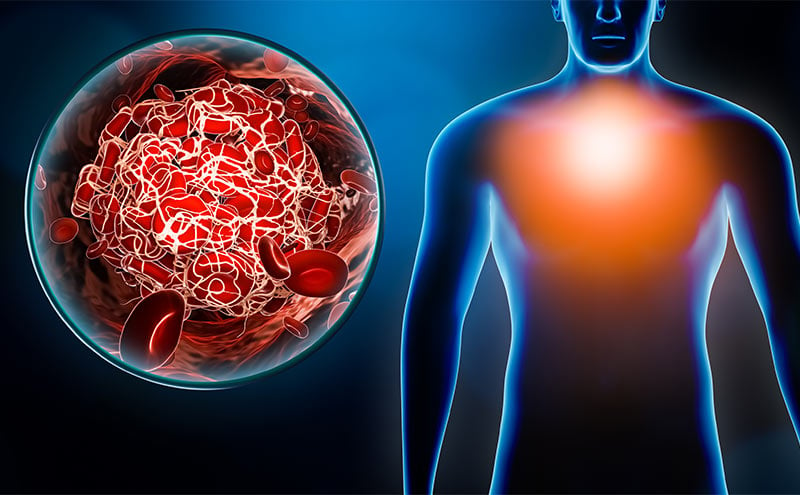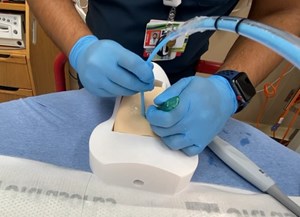
ACEP19 Pulmonary Embolus (PE) Response Team Panel
As part of our ACEP19 Critical Care Medicine (CCM) Section meeting we were very fortunate to hear from an expert panel about Pulmonary Embolus (PE) Response Team (PERT) activations. The panelists included Dr. Chris Kabrhel, an EM physician and the director of the Center for Vascular Emergencies at Massachusetts General Hospital, who also served as the panel moderator. Dr. Daren Beam is an EM physician and the assistant director of emergency research at Indiana University. And finally, Dr. Emily Gundert, an EM physician and intensivist at the University of Texas (UT) Southwestern Medical Center, is a specialist in extracorporeal membrane oxygenation (ECMO).
Dr. Chris Kabrhel began the panel by reviewing the history of PERT activations, which originated in Boston, Massachusetts as a coordinated effort to treat critically ill patients with PEs in an efficient and timely manner. Per Dr. Kabrhel, PEs present in our EDs on a spectrum of severity, with the majority having only minimum hemodynamic and physiologic effects. But patients with moderate and high-risk PEs carry mortalities rates of 30-50%, on par with septic shock, and for whom PERT activations can be of the most benefit. Dr. Kabrhel argued that while a large number of patients with PEs meet at least one marker for high-risk features, only 2% of patients in the EMPEROR registry receive thrombolysis. In fact, amongst those patients with massive PEs and hypotension, only 9% receive thrombolysis. He postulated that the reason for the treatment gap is secondary to a reluctance amongst individual physicians to dose these patients with thrombolytics, which is mitigated by PERT services. Dr. Kabrhel outlined the PERT activations are treated by a multidisciplinary team, including an EM physician, an intensivist, surgeons, and interventional radiologists. Per Dr. Kabrhel, the number of PERT activations increased over time at his home institution, and most such requests were placed from the emergency department. Moreover, most activations were for patients with intermediate and high-risk PEs, rather than low-risk patients. He also noted that not all activations resulted in use of thrombolytics. In fact, most were treated with systemic anticoagulation. Finally, he noted that PERTs provide an opportunity for leadership for EM physicians, especially for EM Intensivists, as most activations originate from the ED.
Next, Dr. Daren Beam reviewed the literature about PERT activations. He noted that the majority of patients receive systemic anticoagulation, as opposed to an invasive procedure, during PERT activations. He surmised, however, that these activations lead to better risk stratification of patients with moderate to high-risk PEs, earlier use of echocardiography and biomarkers to assess for morbidity and mortality, and increased use of extracorporeal membrane oxygenation (ECMO) and catheter-based therapies. Moreover, Dr. Beam stated that research has found the PERT activations lead to quicker response times and faster treatment for patients with intermediate and high-risk PEs, that these patients had decreased hospital and ICU length of stays, decreased major bleeding rate, and decreased mortality rates. However, Dr. Beam noted that several questions remain, including the cost of these activations, the long-term outcomes and benefits, the recurrent rates, and the best therapy for this patient population.
Finally, we were fortunate to hear from Dr. Emily Gundert who discussed the role of an ED-ICU physician in a PERT activation. She argued that the EM-intensivist is an ideal person to serve on his multidisciplinary team, given this community’s perspective and ability to understand both the ED and ICU challenges. She argued that the dual-trained physician would be best at understanding the risk stratification of these patients, guiding and coordinating advanced treatment options, and working well in a multidisciplinary role and communicating with inpatient colleagues. Dr. Gundert argued that PERT activations serve to provide the ED physician with additional resources, guide their management of advanced therapies with expert advice, and provide an interdisciplinary approach to the care of the critically ill patients with intermediate and high-risk PEs.
Our expert panel on PERT activations reviewed the history of these multidisciplinary teams, the literature about their benefits, and the role of ED physicians and EM-CCM providers on these teams. This panel served as a great introduction to this topic by experts in the field.
Ani Aydin, MD



